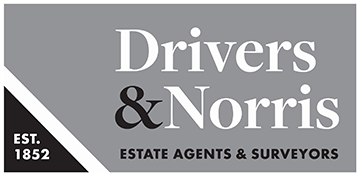
Average property prices remained relatively unchanged in January, following falls in December (-1.3%) and November (-2.4%), according to the latest data released by Halifax.
Kim Kinnaird, Director, Halifax Mortgages, said: “The start of 2023 has brought some stability to UK house prices, with the average house price remaining largely unchanged in January at £281,684, a very small decrease on December. This followed a series of significant monthly falls at the end of last year (-1.3% in December and -2.4% in November).
“The pace of annual growth has continued to slow, to +1.9% (from +2.1% in December), which is the lowest level recorded over the last three years. The average house price is now around £12,500 (-4.2%) below its peak in August last year, though it still remains some £5,000 higher than in January 2022 (£276,483).
“We expected that the squeeze on household incomes from the rising cost of living and higher interest rates would lead to a slower housing market, particularly compared to the rapid growth of recent years. As we move through 2023, that trend is likely to continue as higher borrowing costs lead to reduced demand.
“For those looking to get on or up the housing ladder, confidence may improve beyond the near term. Lower house prices and the potential for interest rates to peak below the level being anticipated last year should lead to an improvement in home buying affordability over time.”
National and regional house prices
The slowdown in annual house price inflation is reflected in most nations and regions across the UK.
Wales, which recorded some of the strongest annual house price inflation over the last few years, saw its rate of growth fall to +2.0% (from +6.0% in December) with an average house price of £210,275 (down from a peak of £224,210 in August).
The South West of England has also seen annual house price growth slow considerably, now at +2.7% (vs +6.0% in December) with an average house price of £298,853 (dipping below £300,000 for the first time since March last year).
In Northern Ireland and Scotland the pace of annual growth eased more slowly. Those buying a home in Northern Ireland will now pay an average of £183,935 (growth rate of +6.9% vs +7.1% in December), while in Scotland average properties now cost £197,784 (growth rate of +2.4% vs +3.3% in December).
London, which for some time has lagged many other areas of the UK in terms of house price growth, saw the cost of buying an average home fall from £541,472 to £530,396 in January, with annual house price inflation flat (0.0%) compared to +2.9% in December. The price of a typical London home is still around a quarter of a million pounds above the UK national average.
Tom Bill, head of UK residential research at Knight Frank, comments: “The poor performance of the UK housing market in the chaotic final months of last year is not a useful barometer for 2023. Activity has been strong in the first five weeks of this year as buyers and sellers reactivate plans and come to terms with the fact that fixed-rate mortgages are now in line with their long-run average.
"Some discretionary demand has disappeared but most buyers need to move and have accepted the fact that a 13-year period of ultra-low rates is over. As budgets adjust to higher rates, we think prices will fall by 5% this year but offers are still exceeding the asking price in some areas. Unemployment remains low and inflation appears to have peaked, so you wouldn’t rule out the housing market surprising on the upside as it did during the pandemic.”
Mark Harris, chief executive of mortgage broker SPF Private Clients, says: "Annual house price growth continues to slow, as activity softens and the market gradually returns to something closer to what we were used to pre-pandemic.
"There is encouraging news on the mortgage front with fixed-rate pricing continuing to edge downwards and it’s only a matter of time before it will be possible to fix for five years at less than 4 per cent. While the days of sub-1 per cent fixes are long gone, rates are beginning to look more palatable for borrowers, which should be a welcome boost for the housing market and encourage more to take the plunge.
"The markets have reacted favourably to the Prime Minister's inflation-cutting pledge and while there may be further rate rises to come, the base rate appears to be nearing its peak, which will be a comfort to borrowers."
Avinav Nigam, cofounder of real estate investment platform, IMMO, says: "The slowdown in annual house price growth was expected. It reflects a combination of forces including reduced economic confidence, reduced affordability as a result of higher rates and stricter affordability ratios imposed by mortgage lenders, and the seasonal slowdown driven by practicalities, including fewer daylight hours for viewing properties.
"As it becomes harder and more expensive to buy, demand for rental properties continues to grow. At the same time, rental listings are down significantly (rental supply is down 38 per cent on the five-year average, according to Zoopla) as landlords exit the market following an increase in the cost of complying with more regulations.
"The opportunity for professional providers of safe, quality and affordable rental housing for the UK is clear."
